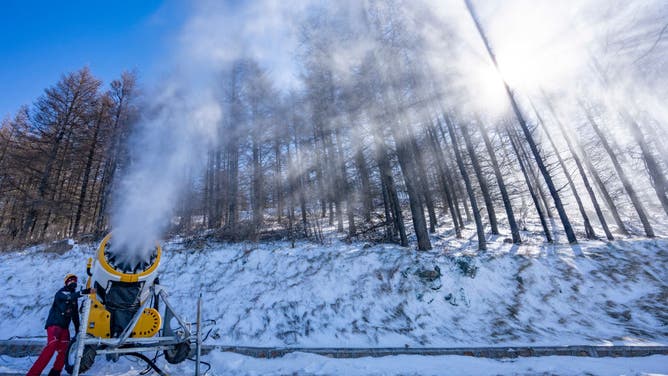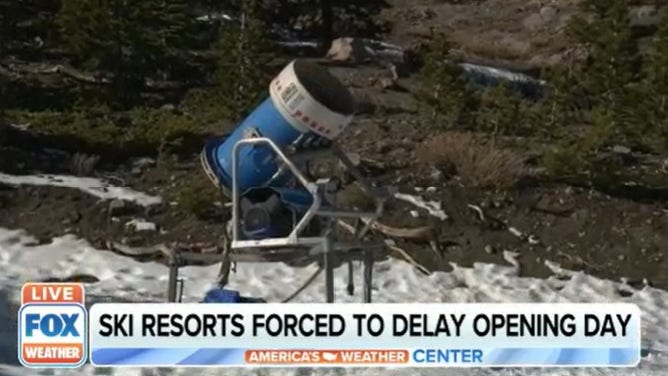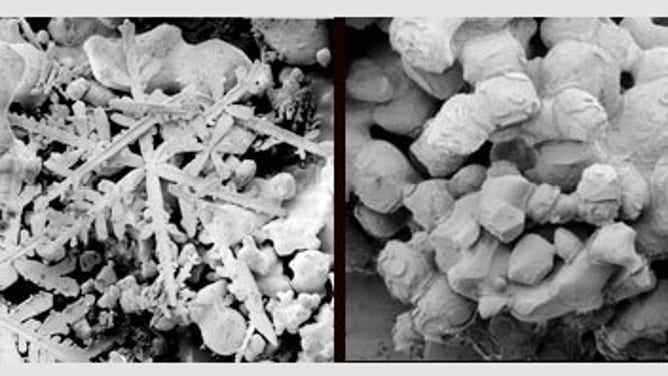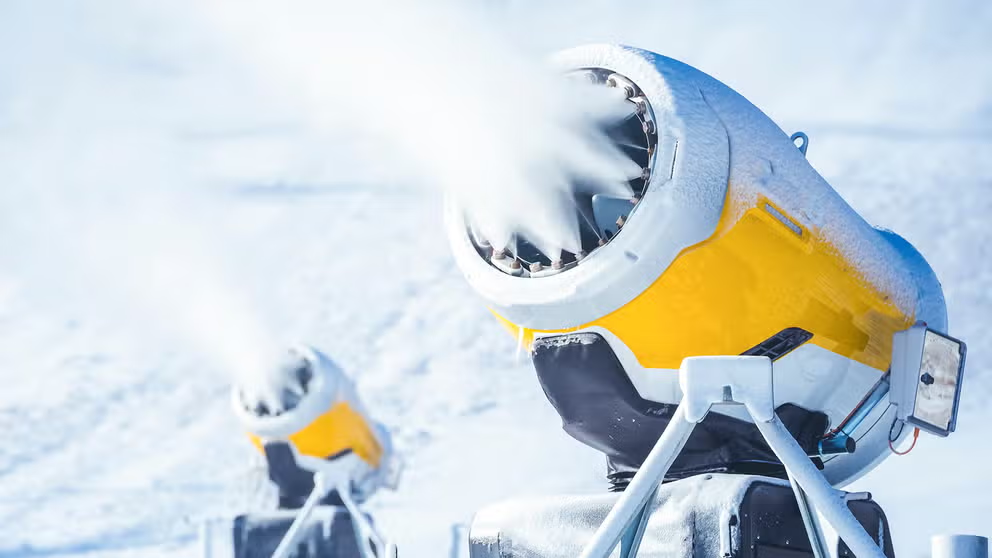How ski resorts make their own snow when Mother Nature doesn't
Cold temperatures, low humidity and low winds is the perfect recipe for snowmaking machines to pump out the powder
How is artificial snow made?
When Mother Nature doesn't deliver, many ski resorts turn to artificial snowmaking to keep their slopes ready for skiers and open longer.
Ski resorts in the U.S. welcome skiers as early as October and the last run of the season can be as late as the Fourth of July. The ski industry can’t rely on Mother Nature for snow the entire time, so some resorts need to make their own snow to keep the slopes open.
THIS IS WHAT BRINGS ‘GOLDILOCKS STORMS’ FOR SNOWFALL THAT’S ‘JUUUST’ RIGHT ON THE SKI SLOPES
Just like natural snow, machine-made snow requires particular weather conditions – cool and dry.

BEIJING, CHINA - NOVEMBER 15: Snowmaking machine works at the National Alpine Skiing Center, venue for alpine skiing events of Beijing 2022 Winter Olympics, in Yanqing District on November 15, 2021 in Beijing, China. (Photo by VCG/VCG via Getty Images)
(Photo by VCG/VCG via Getty Images / Getty Images)
"Best case is we want it at freezing for sure, below 28 is ideal, and you really want low humidity and low winds," Mike Pierce, marketing director at Mt. Rose Ski Tahoe, told FOX Weather Correspondent Steve Bender on Wednesday. "You can get your guns going at max."
The warmer the air, the less efficient the snowmaker, which means less snow.
HISTORY OF SNOWMAKING: THE PANICKED AND ACCIDENTAL BEGINNINGS
Making Snow
Steve Bender interviewed Mike Pierce of Mt. Rose Ski Tahoe about man-made snow on Wednesday.
Snowmaking machines or snow guns either shoot a stream of water blown by a fan or spray a combination of compressed air and water into the air to about 35 feet. The droplets of water evaporate, which cools the air around it enough to freeze other water droplets. This process is called evaporative cooling. It's sort of the same process that gives you a chill when you get out of a pool on a breezy day. The air needs to be dry to quickly evaporate the droplet.
Snowmaking teams constantly monitor the weather looking for the perfect blend of temperature and humidity, using a measurement called the wet-bulb temperature.
Take a look at a chart by Mountain Wave Weather. Snowmaking is possible all the way up to 37 degrees if the air is very dry at 20% relative humidity.

(Mountain Wave Weather)
At 28 degrees and 20% relative humidity, Mt. Rose’s optimal combination, their snow guns can shoot 150 gallons per minute through the nozzles.
"And they'll produce what we call a whale, which is a big mound of snow anywhere from a 100-foot radius to a 150-foot radius depending on the wind," Pierce said. "Then the snow cats will help distribute that out and spread the frosting."
Pierce said he needs low winds, too. Otherwise, the new snow might blow into the valley or a forested area where the resort can’t use it.
THIS IS HOW THE FOX WEATHER APP WILL HELP YOU TRACK WINTER WEATHER

Snowmaking equipment struggling with the warm weather. Mt. Rose Ski Tahoe does not have a deep enough base to open yet.
(FOX Weather)
Mount Rose will turn on the snow guns if the temperature is forecast to be freezing or cooler for at least four-hours. The snowmaking team needs to start all the blowers and pump water from their tanks which takes time.
"We really won't take the effort to turn them on just because it doesn't make sense," Pierce said.
HOW TO WATCH FOX WEATHER ON TV

The photo on the left shows mostly natural snow crystals. The photo on the right shows man-made snow from snow guns.
(Credit: Eric Erbe/USDA)
A USDA scientist took a closer look at natural snow and man-made snow. His photo on the left is natural snow, airier and more crystalline. Manmade snow on the right is dense and round. Water droplets from a snow gun only have tens of feet to form while falling. Natural snow has about 10,000 feet and almost an hour of time to grow their icy arms.
Want to learn more about natural snow? Check out these stories:

